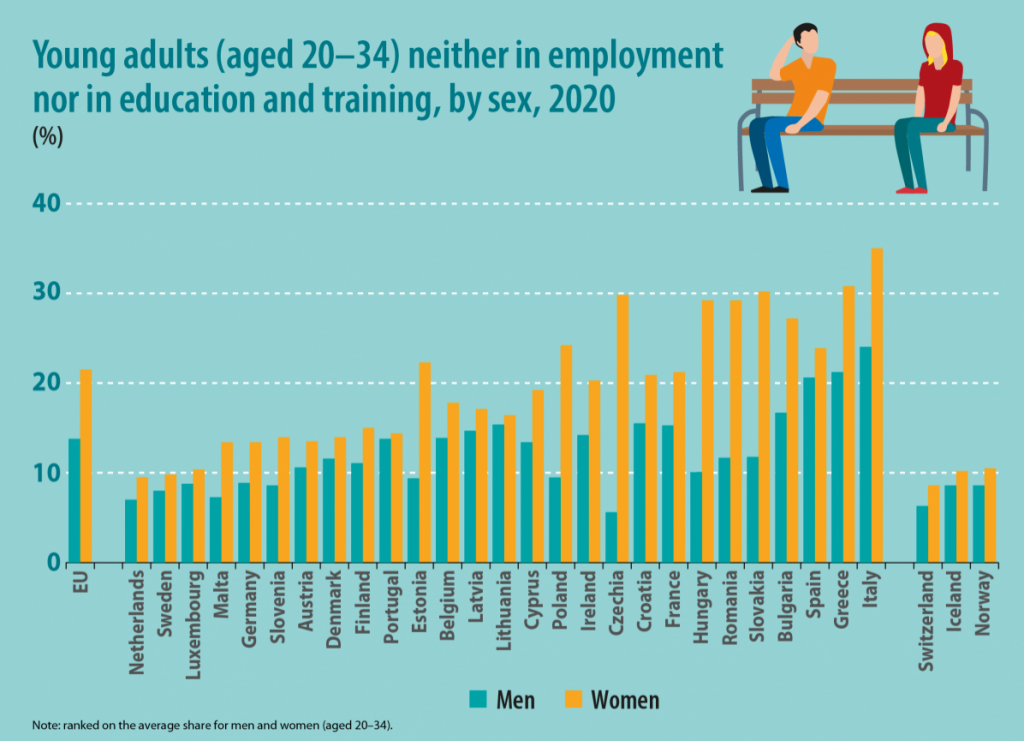The current pandemic crisis can undoubtedly contribute to increasing the distance between young people and the world of work, and more generally to increasing the risk factors that lead them into the broad category known as NEET.
The percentage of Neet young people who are not studying, not attending training and not working (not unemployed, but rather people who are not actively seeking employment) has increased as the Covid-19 pandemic has worsened.
There is a double implication that obliges policy makers to address this issue firmly and responsibly: on a personal level, these individuals increase the likelihood of suffering from poverty and social exclusion, while on a macroeconomic level they represent a possible loss in terms of reduced productive capacity as well as costs to the welfare system.
The economic events linked to the COVID-19 pandemic raise concerns in this direction.
Following the latest European surveys on the Neet phenomenon, it is useful to distinguish two macro age groups, which are involved in different ways in this process.
Recent statistics on NEETs in Europe, provided by Eurostat, confirm that in 2020, in the 15-19 age group, relatively few people were NEETs – around 6.3%.
The most critical situation concerns young Europeans aged 20-34, who are involved in the delicate phase of leaving education and entering the world of work.
The latest data show that:“17.6 % of the 20-34 year-olds in the EU in 2020 were neither in employment nor in education and training (NEETs)”.

In the opinion of experts, the NEET rate for young people is also closely linked to the health of the economy, and in fact there is an interesting correlation between the latter and the youth NEET rate.
For example, we can note that:
The NEET rate in the EU jumped from 16.6% in 2008 to 18.7% just as the global financial crisis erupted, and had risen steadily until 2013 after which the rate fell continuously and in 2019 was below its 2008 level at 16.4%.
However, in 2020, with the onset of the COVID-19 pandemic, the NEET rate clearly increased by 1.2 percentage points to 17.6%. In the last year, the European countries with the highest percentages of Neet 20-34 year olds are Greece and Italy, with the latter topping the list.
In contrast, the Netherlands, Sweden and Luxembourg, for example, have rates well below the European average:
A comparison between Italy and the Netherlands — the EU Member States with the highest and lowest NEET rates in 2020 — reveals that the proportion of young adults who were NEETs was 3.6 times as high among young Italians as among young Dutch.
Written by
Francesco Tirinato – Junior Project Manager (Jump Team)
Sources:
https://ec.europa.eu/eurostat/statistics-explained/index.php?title=Statistics_on_young_people_neither_in_employment_nor_in_education_or_training
https://www.eurofound.europa.eu/it/topic/neets
Photos by:
http://www.globetrotternews.it/la-piaga-dei-neet/




